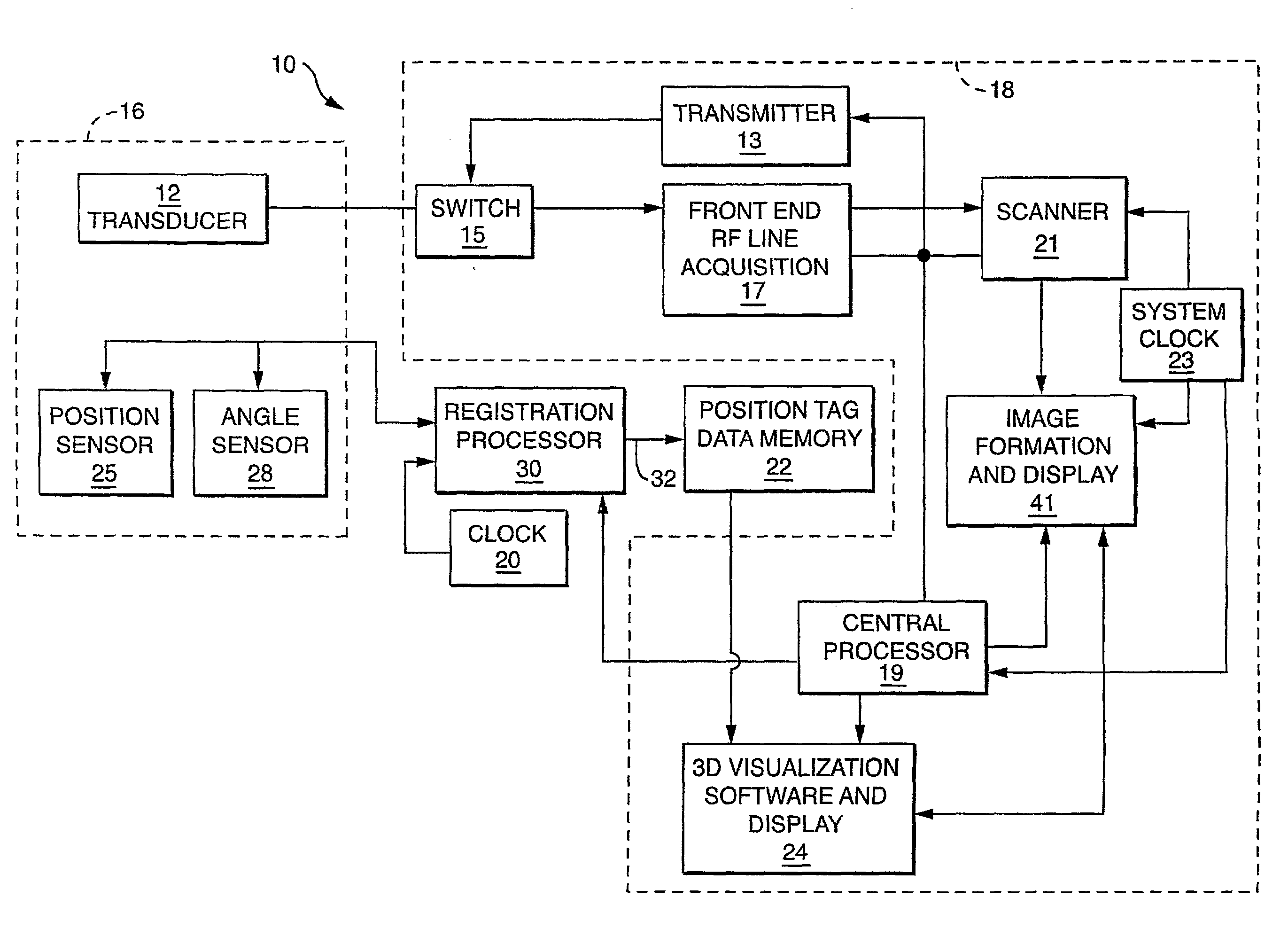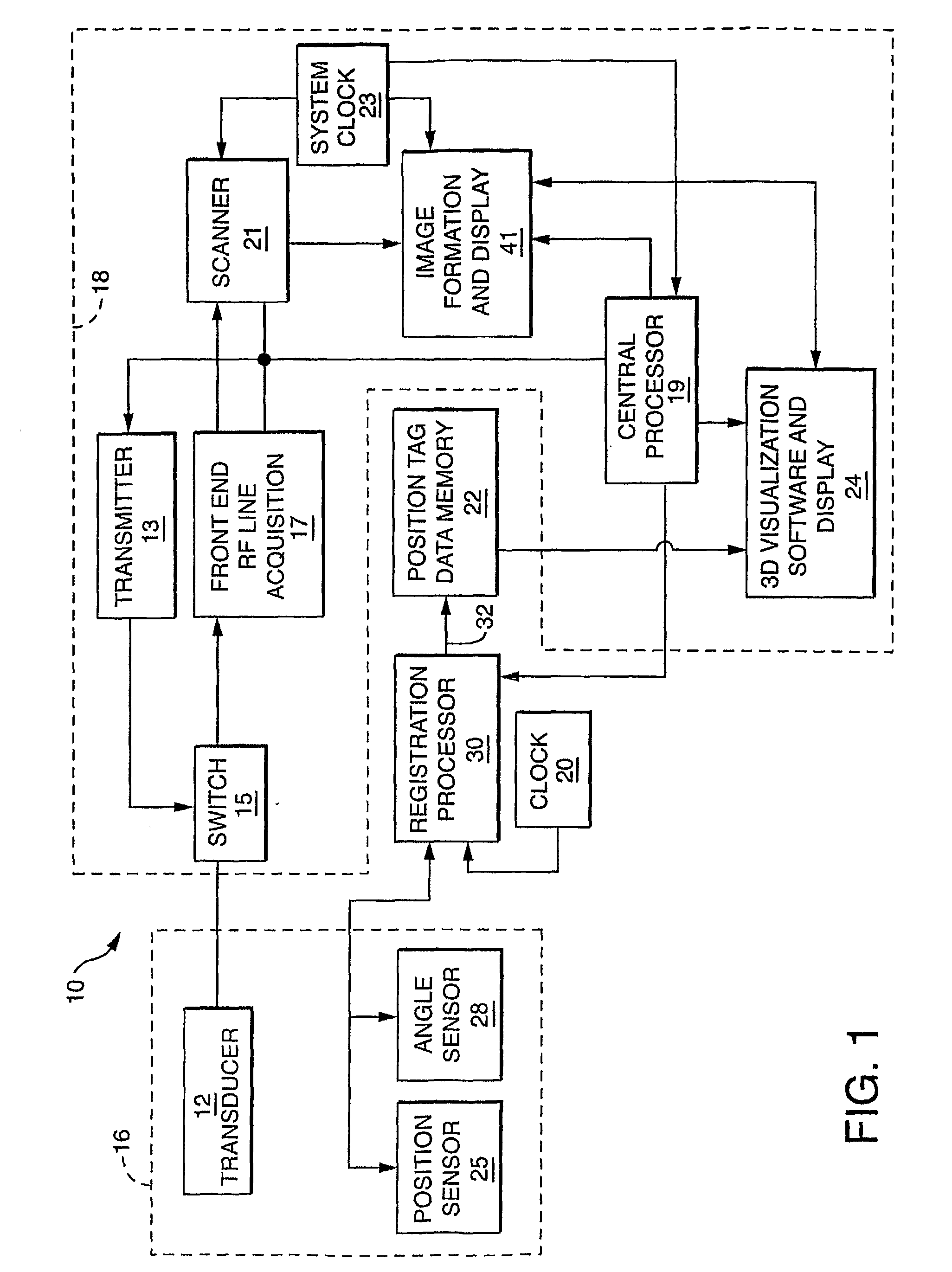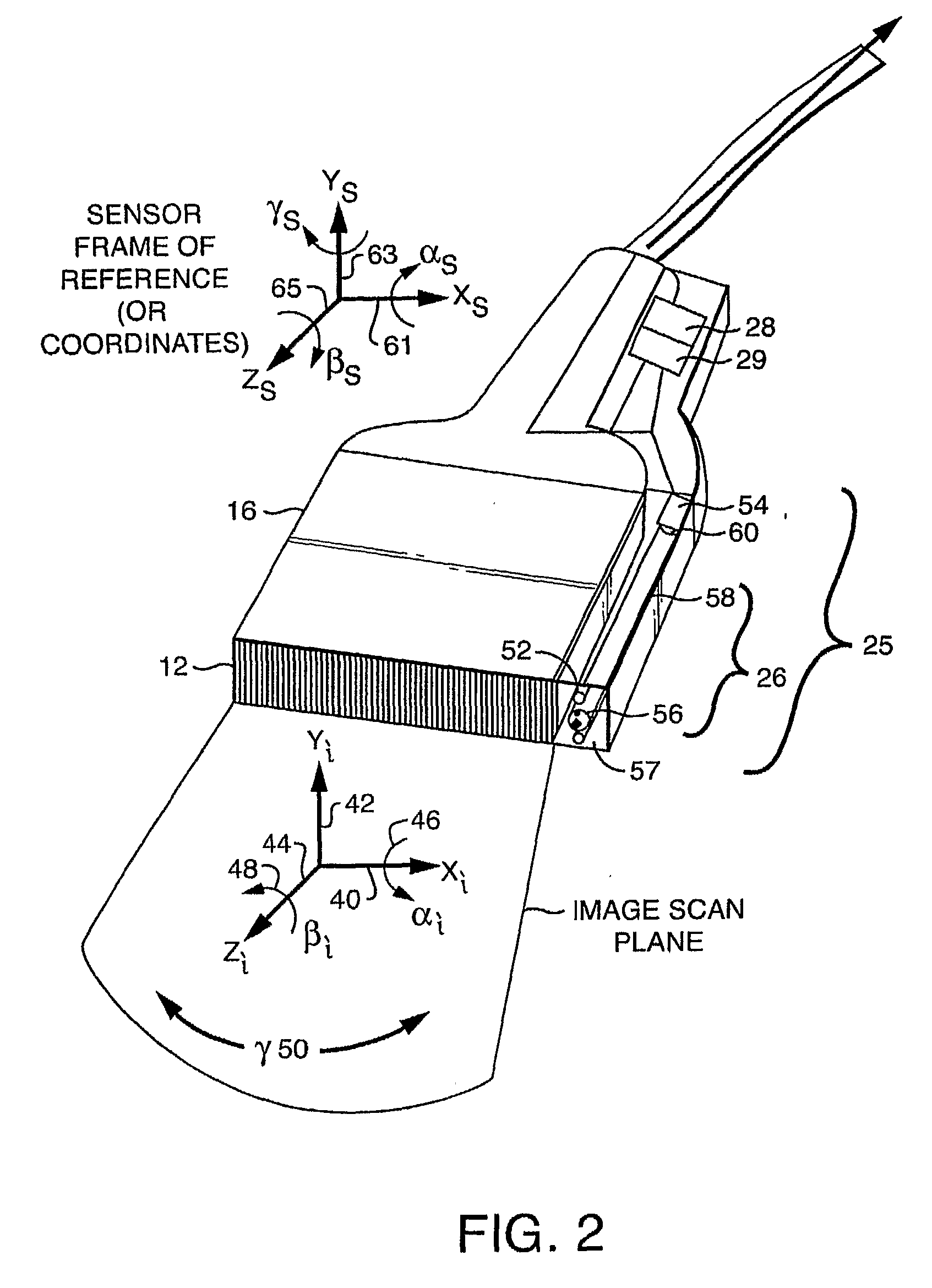Free-hand three-dimensional ultrasound diagnostic imaging with position and angle determination sensors
a three-dimensional ultrasound and position and angle determination technology, applied in the field of ultrasonic imaging, can solve the problems of inability to consider quantitative imaging tools, inability to use free-hand scanning as a reliable technique, and high operator training requirements, and achieves improved ultrasound scanning accuracy, low cost, and simple construction and operation.
- Summary
- Abstract
- Description
- Claims
- Application Information
AI Technical Summary
Benefits of technology
Problems solved by technology
Method used
Image
Examples
Embodiment Construction
Overview
[0034]FIG. 1 shows a free-hand ultrasound medical diagnostic imaging system 10 within which is a first embodiment of an ultrasound registration system. An ultrasound imaging system sends excitation signals through a transmitter 13 through a switch 15 to the transducer 12 operatively disposed in a probe housing 16. The ultrasound array transducer 12 detects response echoes from a region of interest within a patient's anatomy. The imaging system receives echoes from the transducer 12 through the switch 15 that routes the signals to a front end 17 from where they are sent by a central processor 19 in synchronization with a system clock 23 to a scanner 21. From the scanner 21, processed signals are sent to the image formation and display section 41 from which 2D image frames are formed in synchronism with the system clock 23. The registration system includes, preferably, a system clock 20, memory 22 for storing position tags (described below) associated with each 2D ultrasound i...
PUM
 Login to View More
Login to View More Abstract
Description
Claims
Application Information
 Login to View More
Login to View More - R&D
- Intellectual Property
- Life Sciences
- Materials
- Tech Scout
- Unparalleled Data Quality
- Higher Quality Content
- 60% Fewer Hallucinations
Browse by: Latest US Patents, China's latest patents, Technical Efficacy Thesaurus, Application Domain, Technology Topic, Popular Technical Reports.
© 2025 PatSnap. All rights reserved.Legal|Privacy policy|Modern Slavery Act Transparency Statement|Sitemap|About US| Contact US: help@patsnap.com



